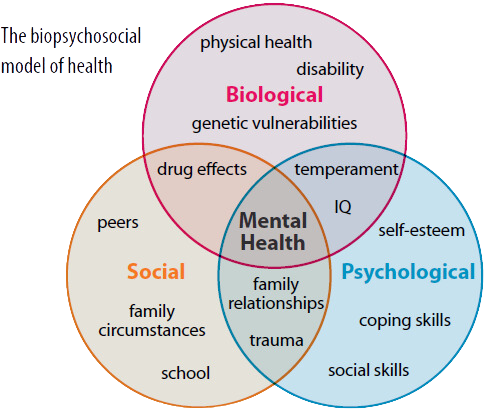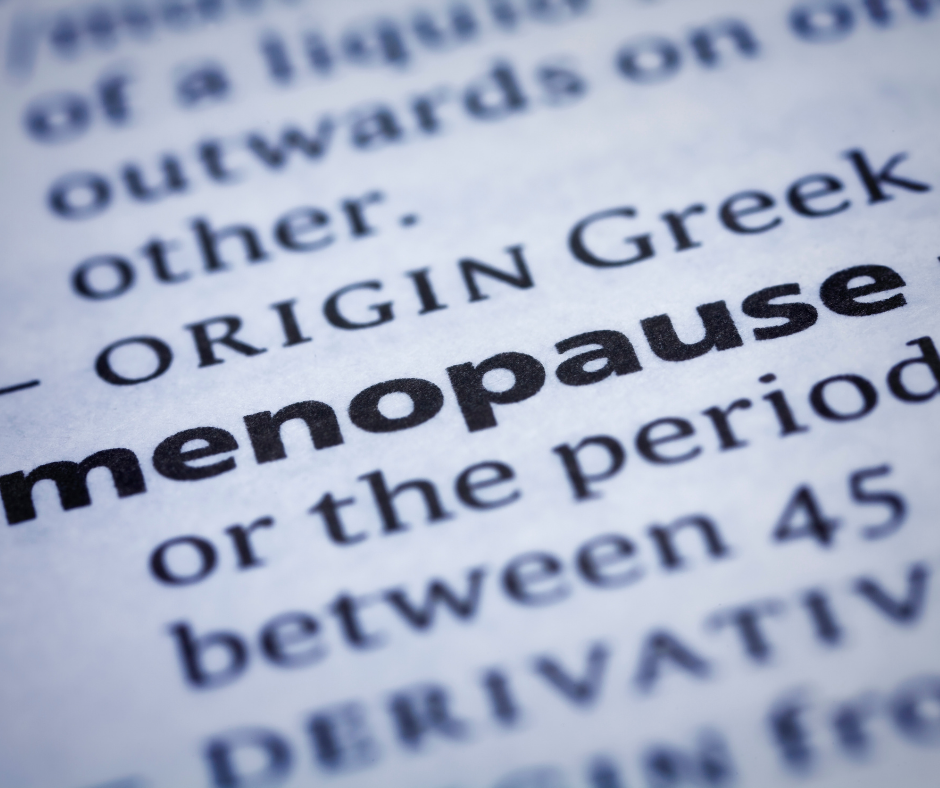The biopsychosocial model, first introduced by psychiatrist George L. Engel in the 1970s, is an integrated approach to healthcare that views health as an intersection of biological, psychological, and social factors (1). The model – which can be applied to menopause care – offers an alternative to the traditional biomedical view, which often focuses narrowly on physical symptoms. Engel recognised that illness and wellness are shaped not only by biology but also by a person’s emotional, mental, and social worlds. By acknowledging that that interconnected aspects of a person’s life—such as mental health, lifestyle, relationships, and cultural perceptions—affect physical wellbeing, the biopsychosocial model offers a comprehensive framework that is especially suited to the complex nature of menopause care, creating opportunities for health providers to work together in developing personalised, integrative care plans for each individual.

The Biological Dimension
For many women, menopause presents physical challenges—from hot flushes and night sweats to changes in mood, energy levels and metabolism. The biological aspect of the biopsychosocial model acknowledges these hormonal shifts and the physiological impact they have on a woman’s body. By addressing biological factors such as diet, lifestyle and genetics, nutrition practitioners can support the client’s cognitive, endocrine and metabolic systems through targeted dietary and lifestyle adjustments such as implementing nutrient-rich foods to stabilise blood sugar and energy levels. Concurrently the client may also work with other practitioners, such as an acupuncturist to balance the body’s energy systems and reduce the severity of symptoms.
The Psychological Dimension
As we know, the menopause phase can be a time of significant change, and the psychological impacts can be profound. Women may experience mood fluctuations, irritation, and even shifts in self-identity as they navigate this transition, often while managing an increased mental load and balancing multiple areas of responsibility that contribute to physical and emotional burnout. Mental health practitioners are integral here, helping women develop coping strategies for these challenges and addressing underlying issues, such as unresolved trauma, that may surface during this time. Additionally, the recent surge in ADHD diagnoses during perimenopause and menopause has highlighted how hormonal fluctuations can reveal underlying genetic vulnerabilities, adding complexity to women’s mental health needs.
The Social Dimension
The social dimension of the biopsychosocial model addresses the often-overlooked social influences on health and wellbeing, which can significantly shape how women experience menopause. Overlapping areas of responsibility, such as work, family, caregiving for ageing parents, and managing illness, can compound stress, while cultural attitudes toward ageing or menopause can contribute to isolation and stigma.
Bringing It All Together: A Unified Care Network – The Biopsychosocial Model to Menopause Care
By applying the biopsychosocial model – particularly in menopause care, practitioners are well positioned to collaborate across disciplines, creating a 360 approach that offers women a multi-layered support network. Each discipline plays a unique role, enhancing the effectiveness of each practitioner’s efforts and ensuring that a woman’s care is comprehensive and responsive to her whole being. This collaboration not only strengthens individual interventions but also aligns with the biopsychosocial model’s vision of addressing the interconnected needs of the whole person.
Challenges and Practical Considerations for Practitioners
While the biopsychosocial model offers a broad and flexible framework to successfully supporting our menopause clients, it does present some challenges. Assessing psychological and social factors, for example, may require more time and nuanced evaluation than a purely physical examination, and measuring these variables consistently can be difficult without standardised protocols. Furthermore, personalised menopause care relies on effective collaboration among practitioners, which can be complicated by the lack of standardised client record-keeping and the challenges of transferring data between providers. While these issues can complicate continuity of care, they are not insurmountable. Developing shared protocols and streamlined communication systems can enhance collaboration and help create a unified, holistic care experience for each patient.
Shaping a New Narrative Around Menopause Care
For holistic practitioners, adopting the biopsychosocial model means moving beyond isolated symptoms to addressing the complete spectrum of factors influencing women’s health during menopause. By embracing this 360 approach, practitioners can shift the narrative around menopause to one of empowerment and support, affirming each woman’s experience as multifaceted and worthy of compassionate care. This model not only enhances patient outcomes but also aligns with holistic philosophies that advocate for supporting individuals as whole beings. Holistic practitioners are uniquely positioned to champion this inclusive, person-centred model, transforming menopause care into a journey of healing, connection, and resilience.
References
- Engel, G. (1977, April 8). The Need for a New Medical Model: A Challenge for Biomedicine. Science (New York, N.Y.). https://pubmed.ncbi.nlm.nih.gov/847460/
- Lowe, R. (2023). Biopsychosocial Model. Physiopedia. https://www.physio-pedia.com/Biopsychosocial_Model
Source:
This article has been supplied by our CMA Approved Suppliers, ReviveActive. We are delighted to be working with them and look forward to further educational articles from them on a wide variety of subjects. We are grateful for their support and collaboration.

